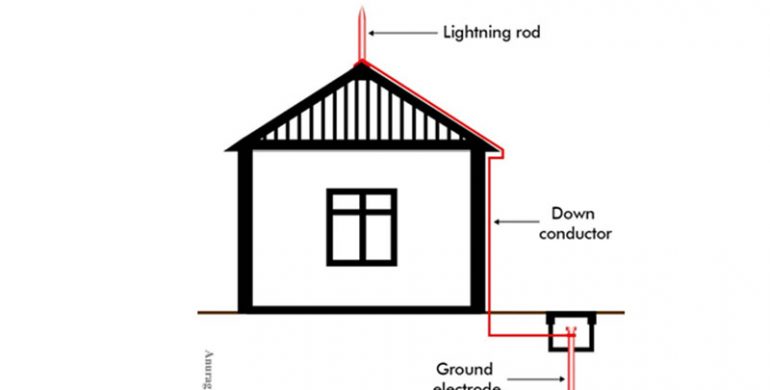
Have you thought of protecting your property from lightning hazards? In Nepal, the disaster results in the loss of millions of rupees and affects hundreds of families every year. So, your property might also be at risk.
Whether your property is at risk of lightning depends on various factors such as lightning density and thunderstorm days. These factors, in turn, depend on geographical and meteorological aspects. Another important agent which may determine the risk is the height of your structure. The chances of getting lightning strikes increase with an increase in height.
Concept of lightning protection
Lightning is a form of static electricity which is initiated by thunderstorms. It carries a very large amount of current which can be deadly if it falls on living beings or property. If we have a lightning protection system in place, it can prevent fatality or destruction within the protected structure.
When lightning strikes, the system can safely direct the charges of that lightning to the ground. These systems will prevent fatality or destruction within the protected structure. They typically comprise of the following three components:
Air terminals
We install these in the roof of a structure. They help to intercept lightning and prevent the flash from striking any other parts of the structure but itself. They are usually copper rods with sharp, blunt or multiple tips.
Down conductors
To pass the charges of lightning to the ground, we need to connect one or more conducting wires between the air terminals and ground. The connection should be as short as possible. These wires are called down conductors.
Ground electrodes
Ground electrodes are rods, plates, or rings that are connected to the down conductors and buried underground. We refer to the process of installing the ground conductors as grounding. It helps to dissipate the charges from down conductors safely into the earth.
The type, number, and placement of these components will depend on the structure and location. We should design and install the components for lightning protection with accuracy and careful calculation and observation. If flawed, they will not work and could instead result in more damage.
Regarding this, there are standards for lightning protection around the world which govern the protection techniques. Unfortunately, there is no Nepali standard devised yet, but we can follow international standards like the IEC standard.
Call an engineer or company with the expertise on lightning protection to know more about this. She/he can conduct a risk analysis and then design a system appropriate for your property if required.
- Surge, the silent killer of Lights and Appliances - June 28, 2020
- Know the details of Lightning protection in buildings - June 15, 2020


